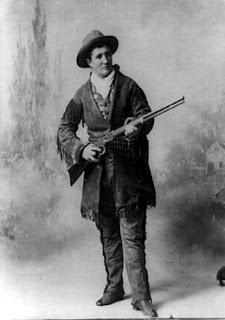A few years ago I had some classes at a B1 level and we were using a New Headway Pre-Intermediate book. It was the second to last (avant dernière) lesson in the book "What if...(Et si)" where my students learned the second conditional. Now what does all this have to do with Yellowstone, you may ask! Just as a reminder, the second conditional is used to express an unreal or improbable condition and its results. The past forms are used to show this is different from reality. The condition is unreal because it is different from the facts that we know. How about if (Et si) I share the text with you?
Supervolcano!
If this volcano erupted, the world would freeze...
Yellowstone National Park, Wyoming, USA. A hot July day, and some of the 3 million visitors who come to the park every year are watching one of the geysers erupt. Everyone is impressed, but as they chatter excitedly and eat their ice-creams, not many of them realise that they are standing on top of the largest active volcano in the world. Scientists have known for a long time that Yellowstone is a volcanic area. But the strange thing is that until the 1960s, none of them could find a volcano anywhere in the park. Then, new photos taken by NASA showed the reason why -- the whole park, 9,000 square kilometers* of it, is a volcano!
Volcanoes like Yellowstone are called 'supervolcanoes' because they are so huge and dangerous --- 1,000 times more powerful than ordinary volcanoes. There are about 40 of them on Earth, but none of them has erupted recently. The most recent was 74,000 years ago in Indonesia. The last time Yellowstone Park erupted was 640,000 years ago.
(Here come the consequences of an eruption...and with the information, grammar too!)
But what would happen if the Yellowstone volcano erupted again today? Here are the events that MIGHT follow:
Day 1 --- Yellowstone Park, USA
If the volcano erupted, hot ash and rock would shoot up into the air at 250kmph. The cities of Denver (where we slept the first night) and Salt Lake City (where we'll sleep the last night of our trip) would be destroyed immediately, and 87,000 people would die. Eventually the ash would cover 3/4 of the USA, and drinking water and food crops would be contaminated.
Week 1 --- Europe
The whole of Europe would be covered by a grey cloud. Summer would turn to winter, and in some places the sea would freeze. No European country would be able to grow food for four or five years.
The next 3 months --- Worldwide
90% of our sunlight would be blocked and a volcanic winter would cover the Earth. The tropical forests would die and food crops in warm countries, such as India and China, would fail. Only countries near the North and South Poles could carry on as usual. Iceland would do well, because most of its food is grown in special greenhouses. It might be able to send food to the rest of the world.
How likely is it?
Fortunately, scientists at the Yellowstone volcanic Observatory say that there is no evidence that the volcano will erupt in the rear future. They say "such events are unlikely to happen in the next few centuries." So we can all get on with our lives and stop worrying, which is good to know.
_____________________________________________
Well, I won't do the grammar lesson with you, but it was an interesting lesson. Did this information frighten me? Some students shared their memories of their visit to Yellowstone. In fact, it's when I was doing the lesson with my classes that I said to myself: "I MUST take a group of students to Yellowstone. What an extraordinary place. I can't be an American and never have visited Yellowstone!"
More on Yellowstone tomorrow.
My best,
Jane
____________________________________________
















